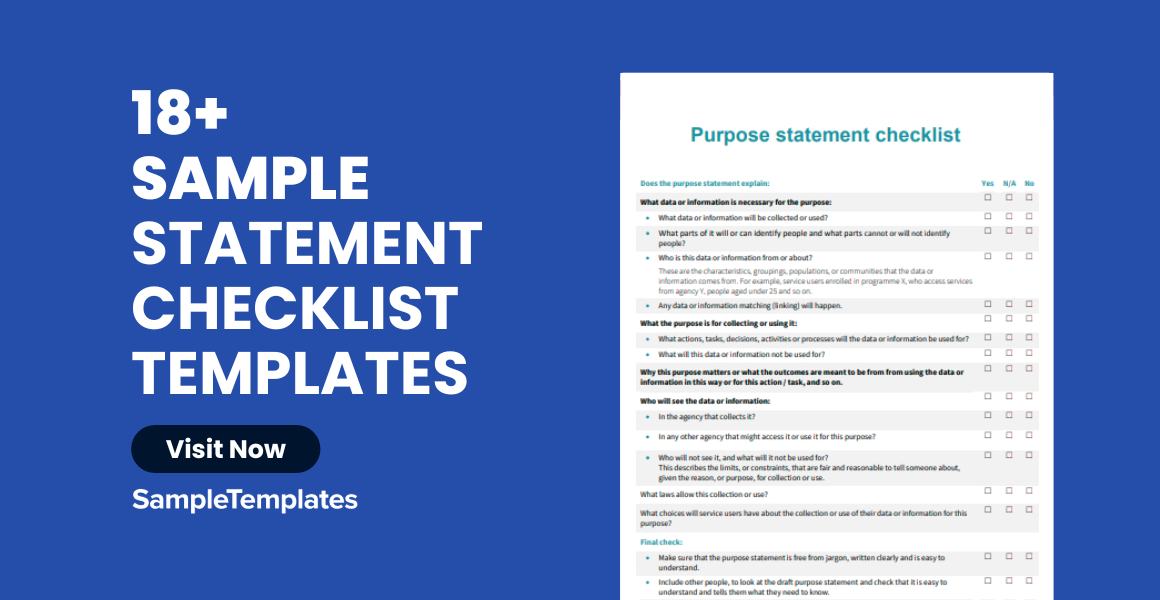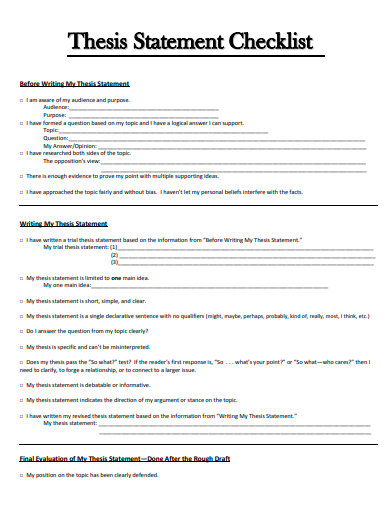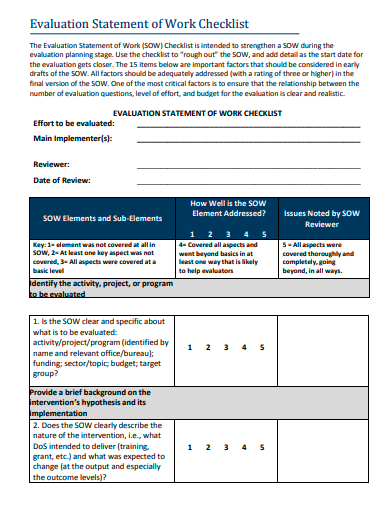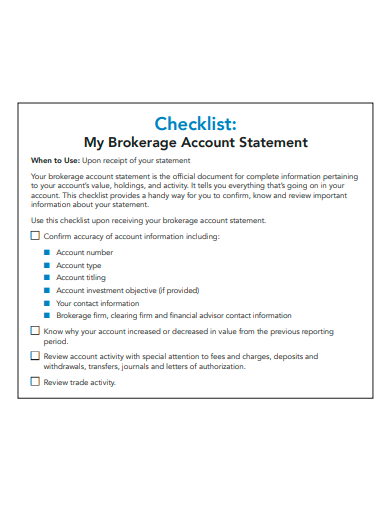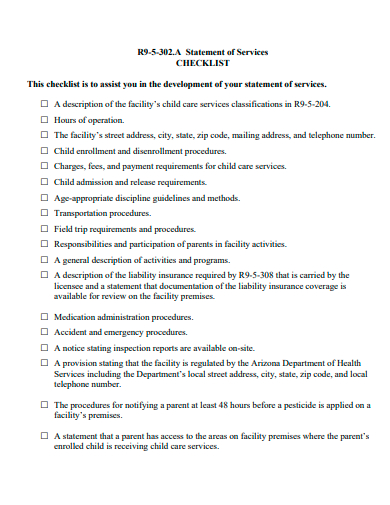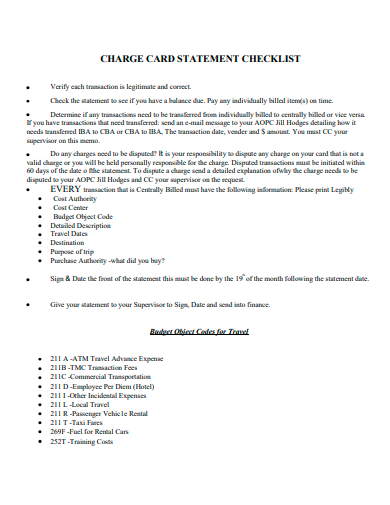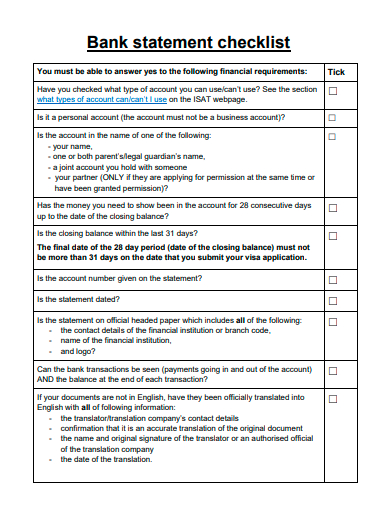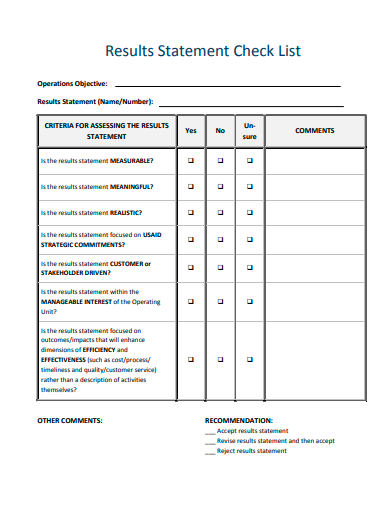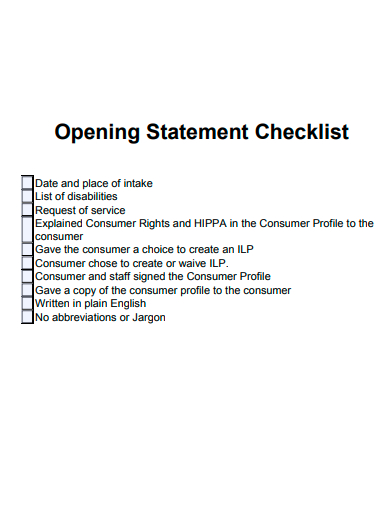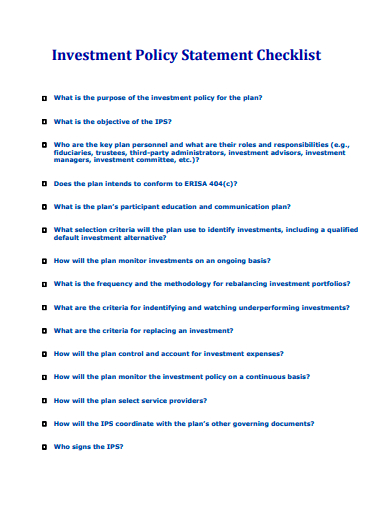Step into the world of organized brilliance with our ‘Statement Checklist.’ No more scrambling through scattered sample notes or second-guessing your records. Dive deep into this curated guide that marries precision with simplicity, offering you an avant-garde solution for today’s record-keeping challenges. A beacon in the haze of numbers and data, our sample checklist is more than just a tool—it’s a game changer in the realm of financial management.
18+ Statement Checklist Samples
1. Sample Checklist Template

2. Basic Checklist Template
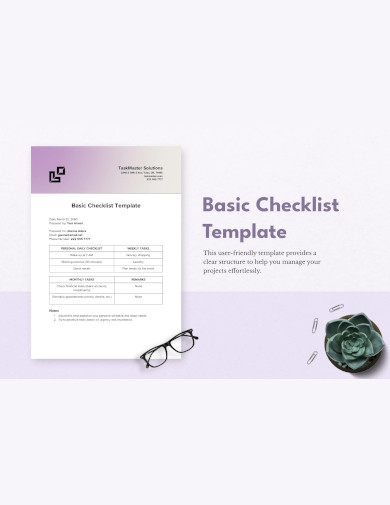
3. Formal Checklist Template
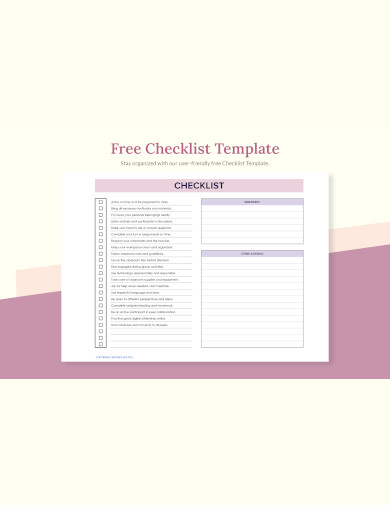
4. Printable Checklist Template
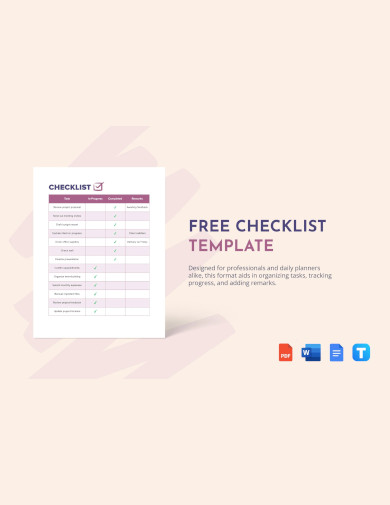
5. Sample Personal Statement Checklist Template
What is a Statement Checklist?
An Essential Tool for Precision and Clarity
In the worlds of finance, law, education, and many other fields, the accuracy and precision of sample statements are paramount. With the importance of these statements, a tool to ensure their clarity, thoroughness, and accuracy is invaluable. Enter the statement checklist.
Introduction
A statement checklist is a systematic guide that helps individuals or organizations ensure that their statements—whether financial, legal, or personal—are complete, accurate, and structured properly. By working through the sample list, users can avoid common pitfalls, omissions, and inaccuracies.
Origins and Evolution
The concept of checklists isn’t new. However, their adaptation to statements has been a relatively recent evolution. This transformation stemmed from the need to minimize errors, especially in areas where precision is non-negotiable, like finance and law.
Why Is a Statement Checklist Vital?
- Precision and Accuracy: The primary purpose of any statement is to convey information. A printable checklist ensures that this information is accurate and precise, minimizing potential misunderstandings or misinterpretations.
- Efficiency: By following a systematic approach, individuals and organizations can create statements more efficiently, avoiding redundancy.
- Accountability: A checklist ensures that all required components of a statement are present, fostering a sense of responsibility and accountability.
- Legal and Regulatory Compliance: Especially in fields like finance and law, regulatory bodies often have stringent requirements for statements. A checklist can ensure compliance with these requirements.
Core Elements of a Statement Checklist
- Header Information: This includes the statement’s title, date, and any associated reference numbers or identifiers.
- Purpose and Scope: Clearly defining why the statement is being made and what it covers.
- Main Content: This is the core of the statement, which could include analysis of financial data, legal arguments, or any other pertinent information.
- Supporting Information: Any data, references, or additional information that supports the main content of the statement.
- Conclusions or Summaries: A recap of the statement’s main points or findings.
- Signatures or Verifications: Any required signatures or verification marks to validate the statement.
- References or Citations: If any external information or data is used, it should be properly cited.
- Amendments or Revisions: A section to note any changes or updates to the statement after its initial release.
Incorporating Technology into Statement Checklists
With the rise of digital tools and platforms, many organizations are integrating technology into their statement checklists. Software can automate many aspects of the checklist, ensuring consistency and accuracy. Moreover, digital tools can easily track changes, archive past versions, and facilitate collaboration among multiple users. You can also see more templates like Production Checklist Samples.
Customizing the Checklist to Fit Specific Needs
While there are universal components to most statement checklists, customization is key. Every industry or field has its unique nuances, terminologies, and requirements. Hence, tailoring the checklist to match specific needs can enhance its effectiveness and relevance.
For instance, a financial statement checklist would prioritize accuracy of numbers and regulatory compliance, while a legal statement checklist might emphasize adherence to legal standards and the inclusion of relevant case law.
Challenges and Solutions
While statement checklists are undeniably valuable, they’re not without challenges. One primary concern is becoming overly reliant on the checklist, which could lead to complacency. It’s vital to remember that a checklist is a tool—not a substitute for critical thinking.
To mitigate this, periodic reviews and updates of the checklist are crucial. This not only ensures the checklist remains up-to-date with current regulations and standards but also encourages its users to remain engaged and proactive.
Statement Checklists in Various Sectors
- Financial Sector: Here, statement checklists are crucial for monthly financial statements, ensuring accuracy in reporting assets, liabilities, income, and expenses. Mistakes can have legal implications and erode stakeholder trust.
- Academia: For research submissions, a statement checklist ensures all parts of a sample paper or study—like the abstract, methodology, results, and citations—are properly included.
- Healthcare: Patient care statements or health declarations often use checklists to ensure all diagnostic results, treatments administered, and patient information are accurately captured.
Digital Transformation and Statement Checklists
With the rise of digital platforms, many checklists have transitioned from outline paper to digital. This shift offers several advantages:
- Automated Verification: Digital checklists can automatically verify certain components, increasing efficiency.
- Easy Updates: If there’s a change in the process or requirements, digital checklists can be updated universally, ensuring everyone has the latest version.
- Integration with Other Systems: For example, a financial statement review checklist can integrate with accounting software, pulling in data directly.
6. Sample Thesis Statement Checklist Template
7. Sample Evaluation Statement of Work Checklist Template
8. Sample Postgraduate Personal Statement Checklist Template
9. Sample Brokerage Account Statement Checklist Template
10. Sample Statement of Services Checklist Template
11. Sample Charge Card Statement Checklist Template
12. Sample Disclosure Statement Checklist Template
13. Sample Bank Statement Checklist Template
14. Sample Certification Statement in Lieu of Checklist Template
15. Sample Purpose Statement Checklist Template
16. Sample Sexual Offence Statement Checklist Template
17. Sample Results Statement Checklist Template
18. Sample Opening Statement Checklist Template
19. Sample Investment Policy Statement Checklist Template
How do you Create a Statement Checklist?
When it comes to managing financials, ensuring accuracy in your statements is paramount. Creating a statement checklist can be an invaluable tool to avoid mistakes and maintain a clear financial picture. This guide will walk you through the steps to create an effective statement checklist to ensure accuracy, clarity, and comprehensiveness.
Step 1: Understand the Purpose of Your Statement
Every checklist begins with a clear understanding of its purpose. Are you crafting a personal financial statement, a business income statement, or a balance sheet? The details and components will vary based on the nature of the statement. For instance, a personal financial statement might focus on assets, liabilities, and net worth, while a business income statement will delve into revenue, expenses, and profit.
Step 2: List Down All Statement Components
Once you know the type of statement you’re dealing with, make a list of all its components. Let’s take a business income statement as an example. The core components might include:
- Revenue (Sales)
- Cost of Goods Sold (COGS)
- Gross Profit
- Operating Expenses
- Net Profit
By breaking down the statement into its constituent parts, you can approach each section with clarity and thoroughness.
Step 3: Create Detailed Sub-Checklists
For every component you’ve listed, delve deeper to create sub-checklists. Using the business income statement example, under ‘Operating Expenses’, you might have:
- Rent or lease expenses
- Utilities
- Salaries and wages
- Marketing and advertising costs
- Depreciation and amortization
- Taxes
These detailed sub-checklists will ensure that you’re not missing out on any specific line items that contribute to the broader categories.
Step 4: Validate Sources and Documentation
Every figure you put in your statement needs validation. As part of your checklist, ensure that for every component or sub-component, you have a reliable source or documentation. This might be sample receipts, invoices, bank statements, or any other relevant financial document. By verifying each figure against its source, you reduce the risk of errors and omissions.
Step 5: Review and Reconciliation
Once your statement is complete, it’s essential to review it in its entirety. Cross-check the numbers to ensure they align with your records. In financial jargon, this process is known as reconciliation. Reconciliation ensures that there are no discrepancies between your records and the statement you’ve prepared.
What is a Strobe Statement Checklist?
A STROBE statement checklist is a tool specifically designed to improve the reporting of observational studies in epidemiology. “STROBE” stands for “STrengthening the Reporting of Observational studies in Epidemiology.” It provides guidance on what information should be included in writing articles about observational studies to ensure clarity, transparency, and completeness. This checklist is crucial for authors, peer reviewers, and sample journal editors to ensure the consistent and comprehensive reporting of observational research.
In Conclusion, A statement checklist is more than just a list—it’s a tool that encapsulates the dedication to precision, clarity, and accuracy. By meticulously crafting, updating, and utilizing this tool, individuals and organizations can elevate the quality and reliability of their statements, ensuring they consistently meet and exceed expectations. Whether in finance, law, or any other field, the value of a robust statement checklist cannot be overstated.
Related Posts
FREE 17+ Survey Checklist Samples in MS Word | Google Docs | PDF
FREE 18+ Internship Checklist Samples in MS Word | Google Docs | PDF
FREE 20+ Voluntary Checklist Samples in MS Word | Google Sheets | PDF
FREE 18+ Summary Checklist Samples in MS Word | Google Sheets | PDF
FREE 14+ Sponsorship Checklist Samples in MS Word | MS Excel | PDF
FREE 18+ Conference Checklist Samples in MS Word | Google Sheets | PDF
FREE 17+ Lesson Checklist Samples in MS Word | Google Sheets | PDF
FREE 18+ Progress Checklist Samples in MS Word | Google Docs | PDF
FREE 18+ Enrollment Checklist Samples in MS Word | Google Docs | PDF
FREE 18+ Graduation Checklist Samples in MS Word | Google Sheets | PDF
FREE 15+ Consent Checklist Samples in MS Word | Google Sheets | PDF
FREE 18+ Review Checklist Samples in MS Word | Apple Pages | PDF
FREE 18+ Submission Checklist Samples in MS Word | Google Docs | PDF
FREE 18+ Request Checklist Samples in MS Word | MS Excel | PDF
FREE 21+ Faculty Checklist Samples in MS Word | Google Sheets | PDF
